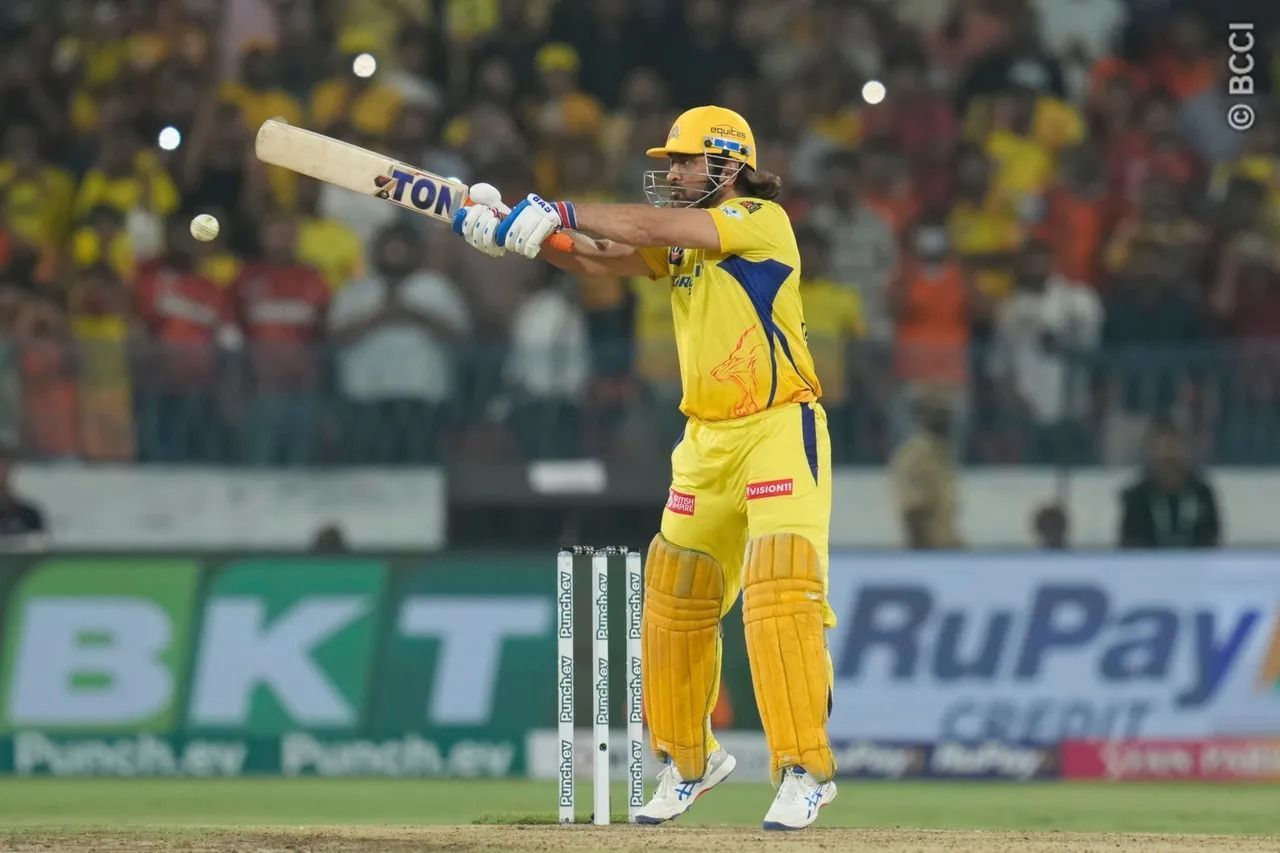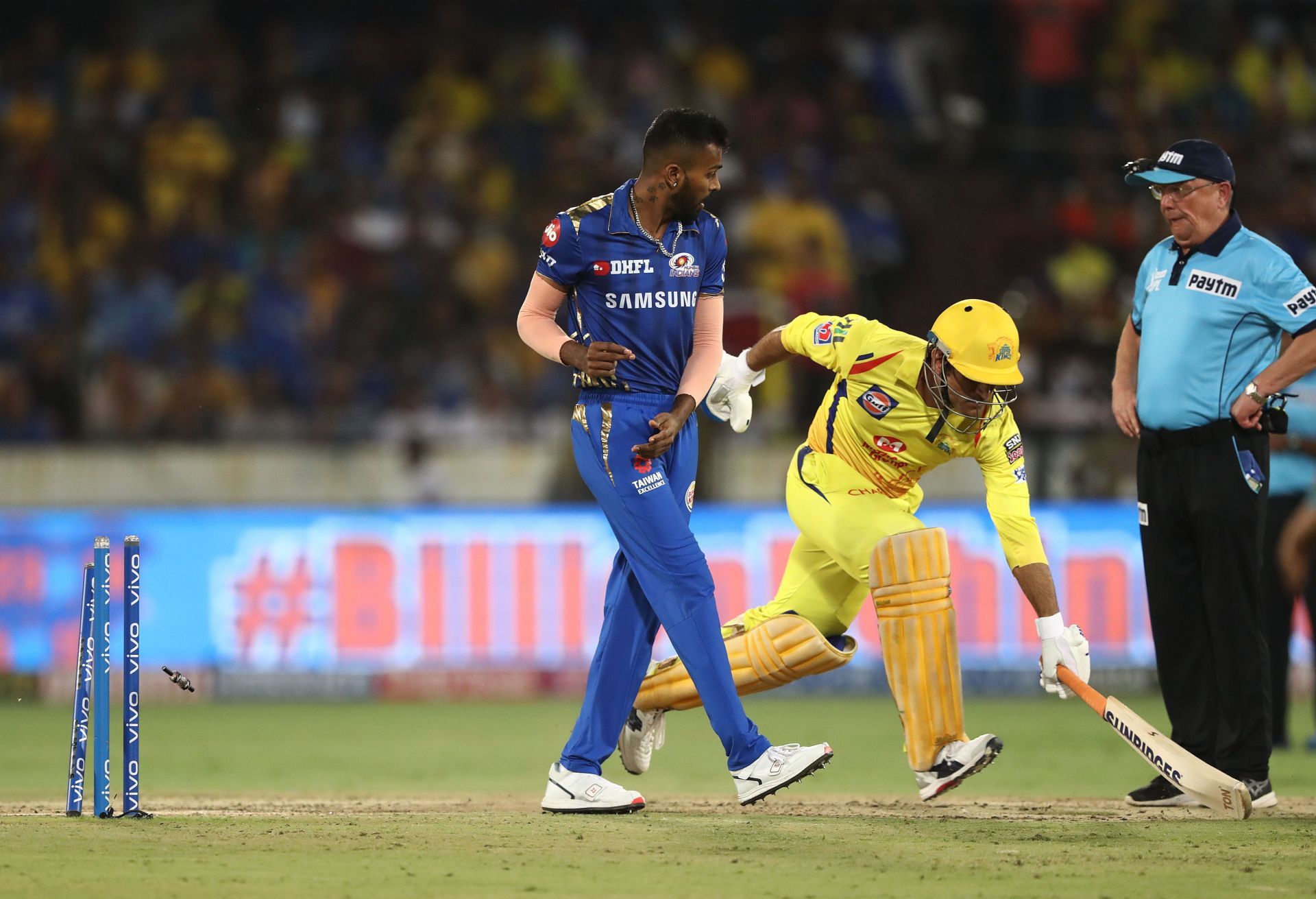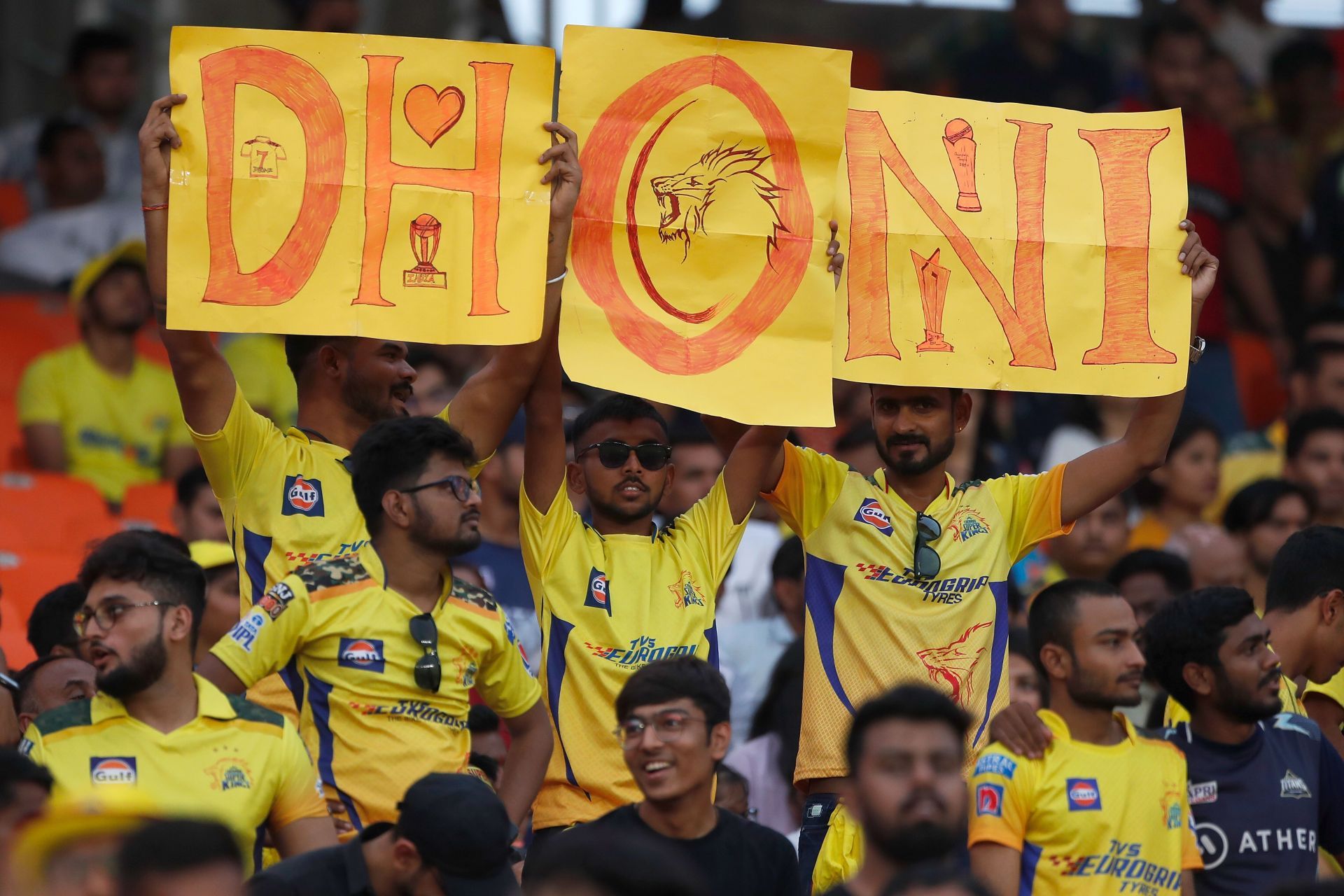
As good as he still is, MS Dhoni isn't who he once was
As of today, who is MS Dhoni?
Dhoni isn't who he once was in some evident ways. For one, in a barely believable sight, he labors between the wickets. Muscle tears and knee injuries have been speculated about without any official diagnosis or confirmation. He is confined to the dugout until the 19th over, and try as fans may to coax their lion out of his den and into the battle arena, he remains steadfast in accepting his current limitations.
But do we really understand the current version of MS Dhoni? The easy and obvious answer is no. We've never really understood any version of the great man, and it's even tougher to start now, when he has gone an entire IPL season without a single interview for the first time ever.
There are a few things we do know, though. Dhoni is still a monster hitter. It's arguable that at 42 years old, he is smashing pace better than he ever has in his career. Ignoring the improbability of that, as we have to do sometimes with things concerning MS Dhoni, we acknowledge that the current version is still definitely good enough for the IPL level.
Dhoni struck at 223.18 at the death in IPL 2024. Only two bowlers managed to dismiss him in 11 innings, and he had his highest average since the 2019 season. He cleared the boundary 13 times and hit 14 fours in just 73 balls.
A Player of the Match award, and consequently a rare sighting at the post-match presentation, eluded him and his fans. But MSD was very much at the top of his game in a season where the Chennai Super Kings were clearly off the pace.
But something imperceptible seems to have changed. Dhoni still has the skills and the streets, but does he have the Dhoni touch? That thing that made opposition bowlers quake in their boots and bungle their execution? And even if he does have that, does he still have the ability to relentlessly capitalize on any mistakes?
What does the data say about post-retirement MS Dhoni?
![MS Dhoni swivels his struggling body. [Image Courtesy: iplt20.com/bcci]](https://statico.sportskeeda.com/editor/2024/05/fa60c-17164618321318-1920.jpg?w=500)
We can split Dhoni's IPL career into two distinct halves - before and after his last international game, which was the 2019 World Cup semifinal against New Zealand. We take two five-year periods for better understanding of the larger trends and a bit of symmetry. The first one is from IPL 2015 to 2019, and the second one is from IPL 2020 to 2024.
Between IPL 2015 and 2019, Dhoni had three seasons where he averaged more than 35 in run-chases. Between IPL 2020 and 2024, he has had only one - this year.
And while there isn't much of a difference in his overall average and strike rate over these two phases, it's important to note that average run rate has increased drastically over the last few years. Dhoni's numbers don't reflect that change.
Between 2015 and 2019, the average batter's strike rate while chasing was above 135 in only one season - 2018. The average batter never averaged above 30 in any of those campaigns. Dhoni outperformed his peers on both metrics.
The COVID-affected seasons (2020 to 2022) were an aberration, with the pitches not getting adequate time to be prepared. So we exclude those numbers for the purposes of this exercise.
Over the last two seasons, the average batter's strike rate while chasing has been 144.4. And while Dhoni's average still holds up, his strike rate of 142.1 falls short of even the most basic metric.
How can someone who has mastered the art of chasing be worse than the average batter, that too when coming to the crease at times when he is expected to get going right from the outset? The answer lies in the question.
Dhoni has never been the type to get off the blocks quickly, irrespective of whether he's batting first or second. He loves leaving it late, and everybody knows that. But that approach has become unsustainable, irrespective of how well he's hitting the ball.
Dhoni's strike rate in the first 10 balls has never been high, but he was good at capitalizing on getting his eye in. Between IPL 2015 and 2019, he had a strike rate of 165.9 in the 20-30 ball phase. In the second period, that number has dropped to under 130.
The below graph illustrates this clearly:
![MS Dhoni's innings construction methods [Image Courtesy: Sai Krishna (@parkedatcover on X)]](https://statico.sportskeeda.com/editor/2024/05/56d82-17164591031535-1920.jpg)
That isn't the only concern. Recently, Dhoni hasn't been great at preserving his wicket while taking his time to get his eye in. That's in violation of one of the main premises of T20 cricket - you just can't get out while wasting balls and leave your team in a deeper hole.
Dhoni, who averaged 43.67 in his first 10 balls between IPL 2015 and 2019, has averaged just 27.44 over the last five seasons. He has had to take risks earlier, but his strike rate in the first 10 balls is still only 128.65. Even the average batter can match that.
Let's now look at the chasing numbers.
Before IPL 2020, when Dhoni could take the time he needed, he was a master of pacing his innings. Just look at his strike rates in each five-ball phase: ever-increasing. And then look at his numbers over the last five years: haphazard.
![Dhoni's innings construction while chasing [Image Courtesy: Sai Krishna (@parkedatcover on X)]](https://statico.sportskeeda.com/editor/2024/05/14390-17164646114955-1920.jpg)
Graphs like these clearly indicate decline. Dhoni's once-airtight approach is failing him, and he has recognized that to a certain extent. But instead of pushing back against his own weaknesses, the former CSK skipper has doubled down and tried to find a way to somehow make it work.
MS Dhoni's rocky relationship with the required run rate

MS Dhoni had an average of 36.2 and a strike rate of 161.61 when the required run rate was over 12 between IPL 2015 and 2019. Over the last five years, his average has increased and his strike rate has decreased. His control rate has increased too, and appreciably so.
What does that mean? He hasn't taken enough risks. Dhoni used to enter his hitting avatar much earlier, but since 2020, he waits until the required run rate is above 15 to strike at 170+.
Let's take a look at the larger picture here. Pictured are his strike rates plotted against the required run rates.
Post 2020, only after the required run rate is 13 do we see a marked spike in strike rate. After the required run rate is 14, Dhoni isn't as good at executing anymore. In contrast, that spike came much earlier between 2015 and 2019. He used to execute.
![MS Dhoni's strike rate vs the required run rate [Image Courtesy: Sai Krishna (@parkedatcover on X)]](https://statico.sportskeeda.com/editor/2024/05/55177-17164611554645-1920.jpg)
Dhoni is leaving it a bit too late and not getting the job done often enough. He continues to put himself in impossible situations, and while he (and only he) could pull them off back in the day, the magic just doesn't happen anymore.
It doesn't seem to be an evident skill issue; he's hammering the ball long. The holes in his methods have admittedly gotten bigger, but the key missing ingredient is something that has never given itself to words - the Dhoni touch.
The old Dhoni would've never guided Mohit Sharma to cover for a duck. The old Dhoni would've never failed to score 5 off 3 against Sandeep Sharma. The old Dhoni would've deposited Yash Dayal's slower ball (drier ball or not) into Cubbon Park, just like he did the previous delivery.
What's next for MS Dhoni?

It's been two seasons now that MS Dhoni's fitness has let him down. He has been consigned to bit-part roles, and while he still has every crowd in the country behind him, it's time to ask the question more seriously than ever before - is it time?
As always, Dhoni's future will remain a mystery until the man himself reveals it. He did state that his last game would be at Chepauk, but fate rarely plays along to those fairytale scripts.
Mahendra Singh Dhoni is the first of his kind and the last of a dying breed. Perhaps no one else in the future of the sport will command the kind of adulation and superstardom that he does. So while he's around, the only meaningful approach is to savor it.
It's time to accept and understand that the great man is still great. He might not be as great as he once was, but does that really matter?